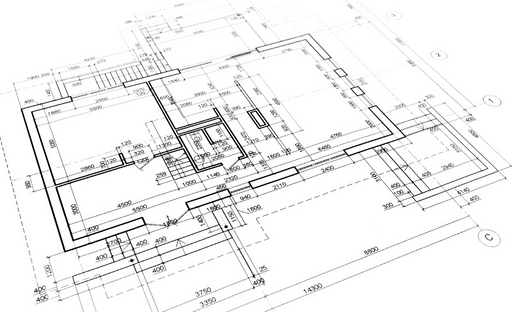Offsite construction means Matrix Structures
As the construction industry evolves, so too do the methods and materials used to build structures. Offsite construction is one of the latest innovations in this field, offering a range of advantages over traditional building practices. In this blog article, we will explore what offsite construction is and how it works, as well as some of its benefits compared to other approaches. We’ll also look at how prefabricated building solutions can maximise efficiency while minimising costs and environmental impact. By understanding these concepts better, you can make an informed decision about which approach best suits your project’s needs.
Offsite construction matrix structures are an increasingly popular method of building that has been gaining traction in the construction industry. This type of construction involves constructing components off-site and then assembling them on-site, rather than building from scratch on-location. By taking this approach, projects can be completed more quickly and with fewer resources while still achieving a high level of quality.
The benefits of offsite construction are numerous. For one thing, it reduces the amount of time needed to complete a project since much less labour is required compared to traditional methods. Additionally, because components are constructed in controlled environments away from the job site, there’s less risk for delays due to weather or other environmental factors that could slow down progress if work was done entirely on location. Furthermore, offsite manufacturing also allows for greater precision when it comes to creating complex structures as well as improved safety conditions since workers don’t have to be exposed directly to hazardous materials or dangerous working conditions found at many job sites.
Another key advantage associated with this type of construction is cost savings; by pre-fabricating parts away from the actual build site you can reduce costs related to material waste and labour expenses associated with traditional methods where everything needs to be built up piece by piece at the ground level before being assembled together into its final form. In addition, prefabrication also helps minimise disruption caused by noise pollution, dust particles, debris etc which would otherwise affect local residents living near any given building site.
Finally, another great benefit offered through offsite production techniques is increased sustainability; because most materials used during fabrication processes are recycled or reused multiple times over their lifespan they help conserve natural resources while reducing overall energy consumption throughout their lifecycle. This makes them ideal for eco-friendly projects such as green buildings which require minimal impact on our environment during their entire life cycle.
Overall, offside production offers many advantages over conventional building techniques including reduced timeframes for completion along with cost savings and improved safety standards among others – making it an attractive option for those looking forward towards more efficient ways of completing large-scale builds without compromising quality standards set forth by respective governing bodies within each country’s jurisdiction.
Exploring the Benefits of Offsite Construction
Offsite construction is an innovative approach to building that has been gaining traction in the construction industry. It involves prefabricating components of a structure offsite and then assembling them on-site, allowing for faster and more efficient construction than traditional methods. This method can be used for both residential and commercial projects, offering numerous benefits such as cost savings, improved safety standards, reduced waste production, and shorter project timelines.
From a financial standpoint, offsite construction offers significant cost savings due to its streamlined process. By manufacturing components in a controlled environment with fewer labour costs involved compared to traditional methods of building on-site from scratch or using precast concrete structures which require additional labour costs associated with transportation and installation at the site location; these savings are passed onto the customer resulting in lower overall project costs.
In addition to cost savings potentials; offsite construction also provides enhanced safety conditions for workers by removing them from hazardous environments typically found during typical build processes such as working at heights or dealing with heavy machinery operations which can lead to accidents if not properly managed according to health & safety regulations. Furthermore, this type of building technique reduces waste production significantly since materials are only purchased when needed rather than having excess material left over after completion.
Finally, one of the greatest advantages offered by offsite construction is its ability to shorten project timelines drastically; this allows customers who need their projects completed quickly without sacrificing quality assurance standards set forth by regulatory agencies. All these factors make it an attractive option for those looking into new ways of constructing buildings efficiently while still meeting all necessary requirements.
Understanding the Advantages of Prefabricated Building Solutions
Offsite construction is a rapidly growing trend in the building industry, offering numerous advantages over traditional on-site construction. Prefabricated building solutions are becoming increasingly popular due to their cost-effectiveness, speed of assembly and quality control.
Prefabricated buildings are constructed offsite using high-quality materials that have been pre-cut and measured to exact specifications. This allows for faster assembly times with fewer mistakes than traditional on-site construction methods. The components are then transported to the site where they can be quickly assembled into a complete structure without any additional labour or material costs associated with on-site work such as excavation or foundation preparation.
The use of prefabricated building solutions also offers greater quality control than conventional methods since all components have been tested prior to being shipped from the factory floor, ensuring that only high-quality materials make it onto your project site. Additionally, prefabrication reduces waste by eliminating excess material usage during production and installation processes which help keep costs down while still maintaining a high level of craftsmanship throughout the entire process.
Finally, prefabrication offers an increased level of safety compared to traditional methods since there is no need for workers at height when assembling structures offsite – reducing risk factors associated with working at heights such as falls from ladders or scaffolding platforms during installation processes on-site locations.
What is Offsite Construction and How Does it Work?
Offsite construction is an innovative building method that has been gaining traction in the construction industry. It involves constructing components of a structure away from its final location and then transporting them to the site for assembly. This approach offers numerous advantages over traditional on-site methods, including cost savings, improved safety, and faster completion times.
The offsite process begins with designing and manufacturing components at an off-site facility using advanced technology such as 3D printing or CNC machining. Once these components are complete they are transported to the job site where they can be quickly assembled into a finished structure by skilled workers using specialised tools and equipment. This approach eliminates many of the risks associated with traditional on-site construction such as weather delays or material shortages which can lead to costly overruns in time and money.
In addition to increased efficiency, another major benefit of offsite construction is improved safety conditions due to fewer workers being present on-site during assembly operations; this reduces potential hazards caused by overcrowding or hazardous materials handling procedures which can be common issues when working with large crews in tight spaces on conventional projects. Furthermore, since most of the work is done before reaching the job site there’s less risk for injury due to falling debris or other accidents related directly to building activities taking place at ground level during installation processes like welding or grinding operations often seen when assembling steel structures traditionally built from scratch at their destination locations.
Overall, it’s clear that offsite construction provides numerous benefits over traditional approaches; not only does it offer cost savings but also improved safety conditions while reducing overall project timelines significantly compared to more conventional methods used today. As this trend continues we may see even more significant advances made in terms of design flexibility, sustainability, quality control, and other aspects making this type of build process even more attractive than ever before.
Maximising Efficiency with Modular Building Systems
Offsite construction is becoming increasingly popular as a way to maximise efficiency and reduce costs. Modular building systems are an integral part of this process, allowing for the rapid assembly of structures with minimal disruption to existing operations. By utilising prefabricated components that can be quickly assembled on-site, modular building systems offer significant advantages over traditional construction methods.
Modular building systems provide improved quality control due to their factory-built nature, meaning that each component is built in accordance with strict standards and specifications before being shipped directly to the site for installation. This ensures consistent results across multiple projects and reduces the risk of costly delays or errors during assembly on-site. Additionally, modular buildings are designed for easy disassembly if needed; they can be easily taken apart at any time without damaging other parts or components of the structure – making them ideal solutions when relocating or expanding operations in future years.
The use of offsite construction also offers cost savings through reduced labour requirements compared to traditional methods; fewer workers are required since most tasks such as cutting lumber and welding steel beams have already been completed prior to delivery at the job site. Furthermore, because all materials arrive preassembled from a single source supplier there’s no need for additional subcontractors which further reduces overhead costs associated with project management fees.
Overall, modular building systems offer numerous benefits over conventional construction techniques including improved quality control, faster completion timescales and lower overall costs – making them an attractive option when it comes to maximising efficiency while minimising disruption during new builds or renovations alike!






